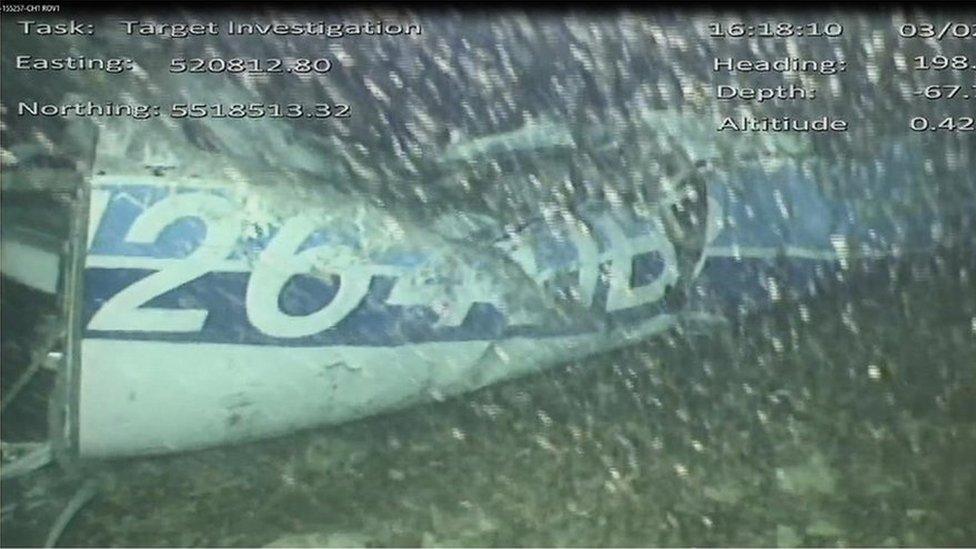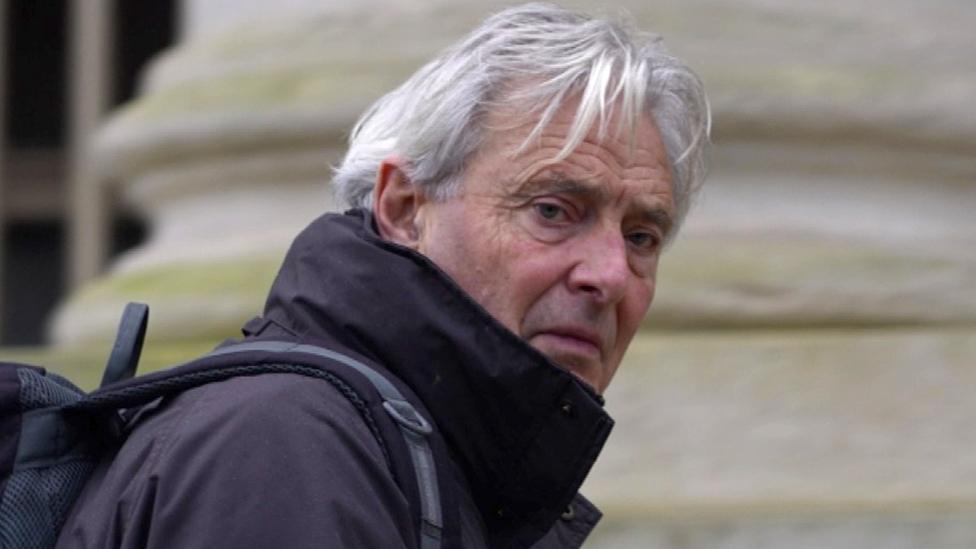Emiliano Sala: Faulty exhaust 'likely cause of plane crash'
- Published

Emiliano Sala had just signed with Cardiff City before the crash
A plane carrying footballer Emiliano Sala had not had a pressure testing on its exhaust system, an inquest heard.
Accident inspector Brian McDermid said fire or damaged exhaust were the only plausible explanations for carbon monoxide in the cabin, and there was no evidence of fire.
Sala and pilot David Ibbotson died when the plane crashed in the English Channel in 2019 en route to Cardiff.
Mr McDermid said there was no legal requirement for exhaust pressure tests.
He also said that at its last maintenance check "there was no evidence to suggest that the aircraft was not serviceable or fit to do that flight".
The jury has heard Sala's blood had 58% carbon monoxide blood saturation. A pathologist called that "severe poisoning".
The 28-year-old had been flying to Wales from France to join Cardiff City from Nantes.
Explaining how carbon monoxide could have entered the Piper Malibu's cabin, Mr McDermid told Dorset Coroner's Court the plane was fitted with an onboard heating system, which drew cold air from outside.
The air passed through a sealed chamber that was heated by exhaust gasses as they flow through the system.
Mr McDermid, who works for the Air Accidents Investigation Branch, said the most likely cause of the carbon monoxide was from exhaust gasses leaking into a piece of equipment called the heater muff.
From there they seeped into the cabin.

The wreckage of the plane was found a month after the crash
"There is no evidence of a fire, so we believe the carbon monoxide must have come from the engine into the cabin," he said.
"Our analysis, taking everything into consideration, for the exhaust fumes to get into the fuselage, which leads us to conclude that the most probable way is through the cabin air system.
"It took us a while to get there because we couldn't find a way of getting the carbon monoxide in.
"I went through the summaries of 190 accident reports, and I could not find anything there referring to problems with carbon monoxide - there was no history for it.
"Since 1984 we have not been able to identity something similar."
He called this "the most probable explanation".
"On the balance of probabilities we reached the conclusion it was the exhaust muffler," Mr McDermid said.
"The exhaust system will deteriorate and therefore it is important regular maintenance is carried out to ensure its integrity and to ensure the aircraft remains safe."

David Henderson is currently serving an 18-month prison sentence for organising the flight
The inquest heard light aircraft pilots were encouraged to carry carbon monoxide detectors on flights but this was not mandatory.
Since carbon monoxide is odourless people may not be aware of its presence.
"We think the use of carbon monoxide detectors in light aircraft should be mandatory, at the moment they are not. Pilots are advised to carry them but it's not mandatory."
Mr McDermid told the inquest there was no record of pressure testing being carried out on the plane's exhaust system, although there was no legal requirement to do so.
"When the aircraft left that last maintenance check there was no evidence to suggest that the aircraft was not serviceable or fit to do that flight," he said.
"Something on the way to Nantes - that bang. We tried and talked to a lot of people. What could it possibly be and was it a release of energy that weakened something?"
The inquest has previously heard on the outbound flight to Nantes on January 19, Mr Ibbotson did not tell authorities about a loud bang from the aircraft.
"I would have had an engineer look at the aircraft to find out what the bang was - things just don't happen for no reason," Mr McDermid said.
Related topics
- Published24 February 2022

- Published22 February 2022

- Published15 February 2022
